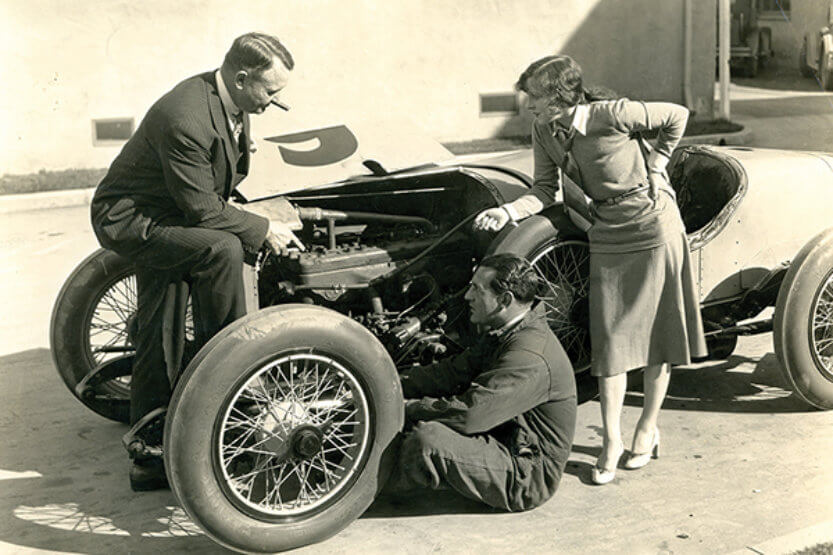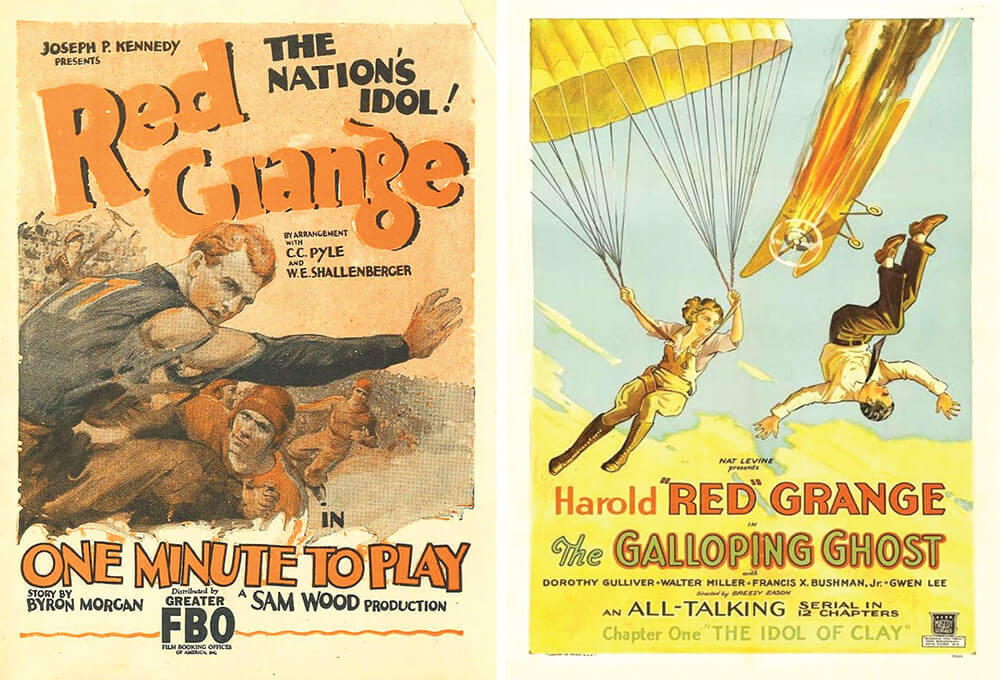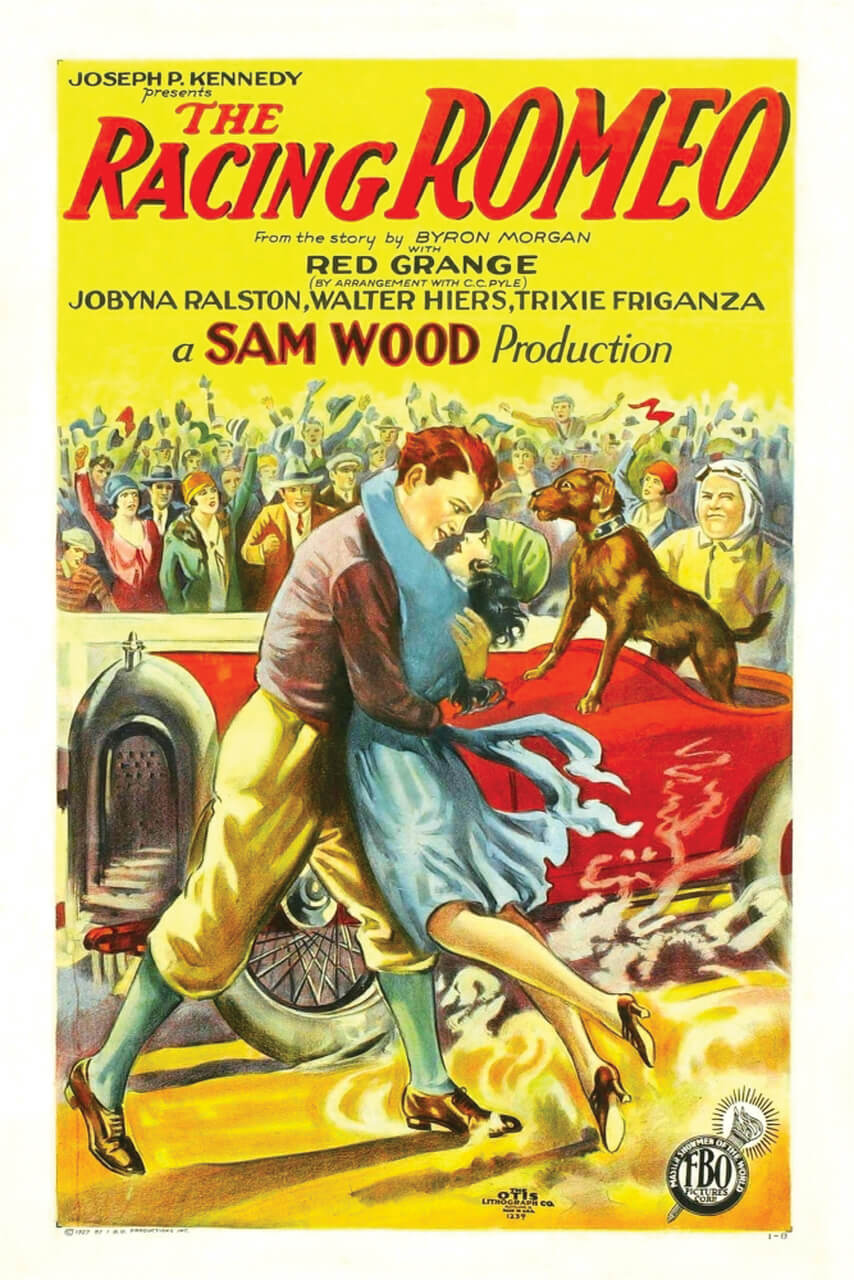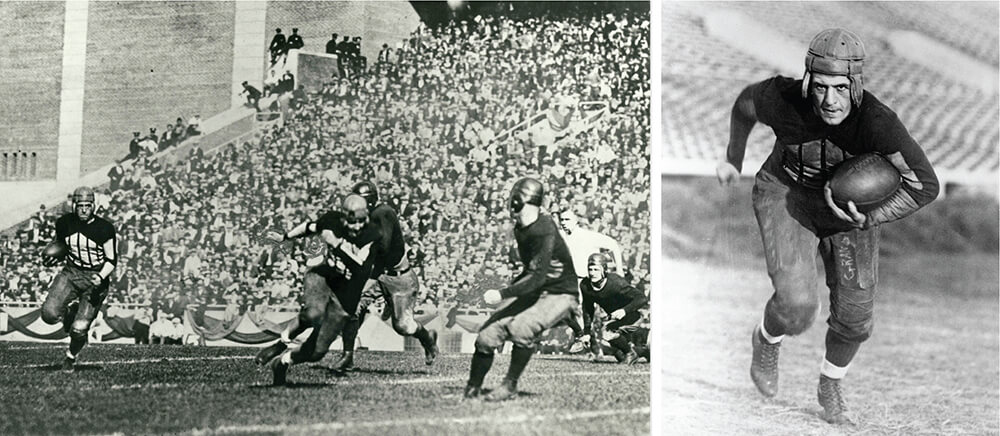Memory Lane: Matinee Idol
 Despite calling it “awfully hard work,” Grange looked back at his time in the movies as “one of the most memorable and worthwhile chapters in [his] life.” Above: Grange on the set of The Racing Romeo (1927) (Image courtesy of Courtesy of the UI Division of Intercollegiate Athletics)
Despite calling it “awfully hard work,” Grange looked back at his time in the movies as “one of the most memorable and worthwhile chapters in [his] life.” Above: Grange on the set of The Racing Romeo (1927) (Image courtesy of Courtesy of the UI Division of Intercollegiate Athletics) In the 1950s, two decades after the end of his legendary football career with Illinois and the Chicago Bears (1923–34), Harold “Red” Grange was still an icon for kids all across America. But not because of football.
For many nascent Baby Boomers, Red Grange was a movie star—the action hero of The Galloping Ghost (1931), a rollicking adventure serial that was a staple of Saturday morning television, filled with car and speedboat chases, explosions, falls from airplanes and fistfights galore. Young viewers idolized Grange as he broke up a gambling ring, saved the day and got the girl.
Not bad for ESPN’s “Greatest College Football Player Ever.”
Grange’s sideline in acting started in 1926, following his first season with the Bears. He arrived in Hollywood with a studio contract and one hope: to fare better than other ’20s sports icons turned actors, such as New York Yankees slugger Babe Ruth and boxing champion Jack Dempsey, whose thespian skills had been as wooden as Ruth’s bats.

Posters from The Galloping Ghost, 1931 and One Minute to Play, 1926. (Left image courtesy of Film Booking Offices of America, Right image courtesy of Mascot Pictures)
In his first movie, the football comedy One Minute to Play, Grange proved that he was up to the task, as an adequate comedian and charismatic leading man. But he really shined in the realistic football scenes, perhaps the best-filmed record of Grange doing what he did best: evading defenses and scoring touchdowns.
One Minute to Play was a significant box office success, and its studio, Film Booking Offices of America, was eager to make a follow-up. However, Grange made it clear that while he was open to making more movies, he had no plans to abandon football for an acting career.
Grange returned to Hollywood in 1927 for his second movie, The Racing Romeo. Gearhead Grange got to fulfill one of his greatest fantasies by playing Red Walden, a race-car driver and garage owner preparing for the Big Race. Although the most dangerous on-screen driving was left to his stunt doubles, Grange got his thrills after hours, speeding around the track in souped-up rides.
Before the film’s release, Grange’s agent, C.C. Pyle, got into a bitter argument with its distributor, FBO, over the profits from One Minute to Play. As a result, FBO released The Racing Romeo with little promotion. It was a box office failure, and Grange thought his days in Hollywood were over.
But he was wrong. After Grange missed the 1928 football season due to injuries, he needed money. Tinseltown was happy to oblige, and in the summer of 1929, Grange made his final movie, The Galloping Ghost.
Then, the stock market crashed.
When The Galloping Ghost was finally released to theaters in 1931, it appeared in 12 weekly installments. Audiences loved the serial, and it attracted a dedicated following throughout the Great Depression.
Twenty years later, during the movie’s resurgence on television, Grange told interviewers that back in ’31, opposing players would ask him between plays what was going to happen in the next week’s episode.
They asked him because, whether he was on a football field or a movie screen, Red Grange always kept you on the edge of your seat.



